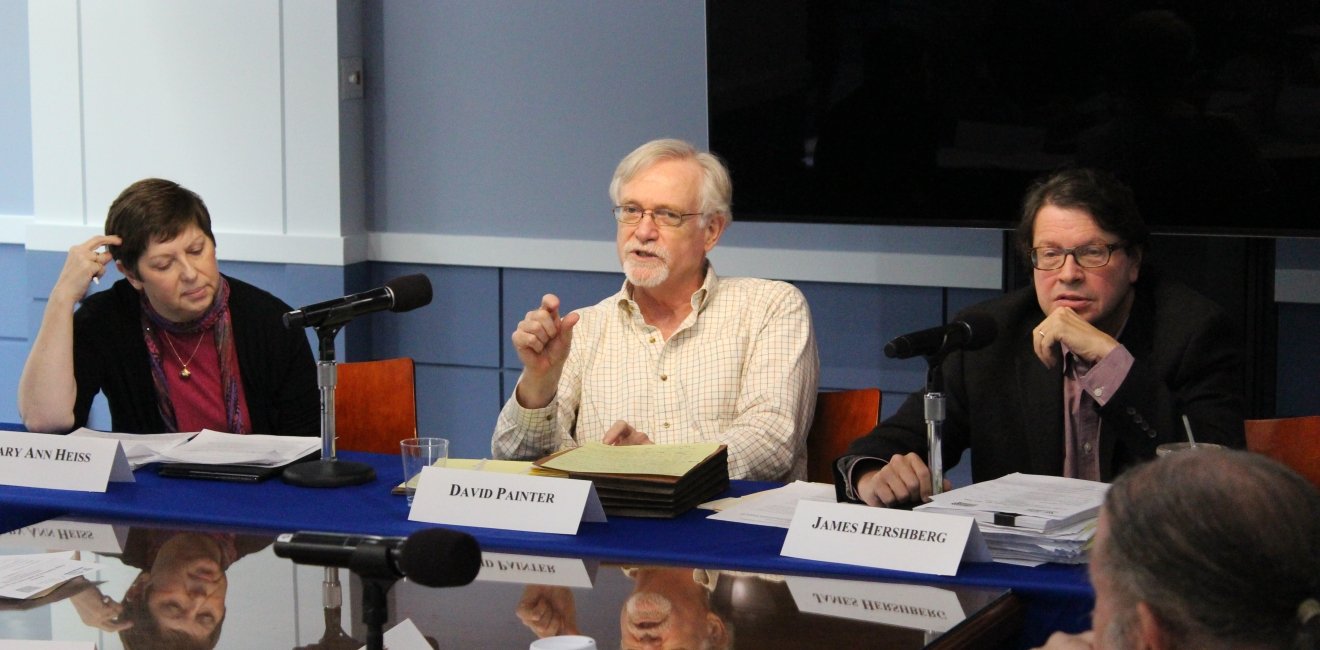In June 2017, Iran scholars fairly rejoiced when the State Department suddenly released its long-suppressed Foreign Relations of the United States (FRUS) volume covering the years 1951-1954 in Iran. The defining event of that period, of course, was the coup d’etat against Prime Minister Mohammad Mosaddeq, orchestrated by the US and British governments with Iranian participation.
The 1989 publication of a previous FRUS compilation on the period deliberately omitted all mention of the foreign hand behind the coup, which led to a public relations scandal for the State Department and a pledge to produce a “retrospective” collection. After years of delays, including for policy and political reasons, the new volume finally appeared this year.
To help gauge what’s new and interesting in the 1,007-page volume, the Wilson Center’s Cold War International History Project, the National Security Archive at George Washington University, and GWU history professor James Hershberg recently brought together a group of academics and former government experts whose specialties range from US-Iran relations to the Cold War. (See attached program.)
Over the course of a day-and-a-half on September 11-12, the group discussed the various stages of the lead-up to the coup, the operation itself, and its aftermath.


The conversation started with a presentation by the volume’s editor, James Van Hook, who at the time had been the first joint staff historian of both the State Department and CIA. Given the checkered history of the 1989 volume, speculation was high prior to the 2017 release about what it would contain and whether specifically the CIA would allow full access to its record holdings. Van Hook called the process a “best-faith effort” by all concerned and confirmed that he had gotten “full, staff-like access” to intelligence files.
A key decision by Van Hook and his colleagues was to focus less on the coup itself, still a sensitive topic in some quarters, and more on the underlying policy process. The lack of available records on the operation, especially compared to the relative wealth of country analyses, policy discussions, and related materials was a major factor there. State and National Security Council records complement the CIA files. Defense Department records, unfortunately, are essentially absent.
Van Hook saw his task as presenting an “American story,” one that would help cultural and intellectual historians as well as diplomatic historians understand and assess the US approach to what for many Americans back then was a largely unfamiliar part of the world. Indeed, much of the discussion over the succeeding panels revolved around questions of governmental process and cultural perspectives.
As for the former, there are hundreds of pages reflecting differing internal views on how to deal with Mosaddeq and the oil nationalization “problem,” which had quickly yielded a harsh response from Great Britain in the form of economic embargoes and threats of military action. US National Intelligence Estimates, produced by intelligence community analysts, tended to see Iran’s circumstances as generally manageable for the Mosaddeq government. More senior—politically oriented—officials such as Allen Dulles, who became CIA director under President Eisenhower, and Kermit Roosevelt, head of Near Eastern operations at the same agency, clearly wanted the US to take action, and shaped their increasingly strident opinions accordingly.

By itself, the quantity of new materials on the policy process—relatively few items duplicate what has been released before—makes this volume an invaluable record. Even more enlightening are the insights it gives on how American officials saw Iran as a country and Iranians as counterparts. There was some disagreement at the workshop over the general quality of US analysis of political developments under the Shah, but virtual unanimity at the astonishingly parochial and condescending views of Americans about their host country. The assessments of Embassy Second Secretary John Stutesman were singled out as classic instances of “Orientalist” thinking from the time.
The collection still leaves out important sources on the coup, most notably all three of the CIA’s official internal histories of the event — a decision most at the workshop criticized. (At least the declassifiers allowed the editors to include full file citations for virtually all the materials that were withheld.) Another key set of missing materials are the British files, which London has stubbornly refused to open.
Still, several participants pointed to other useful materials that will interest specialists in various topics. Mark Gasiorowski, who has tracked a variety of subjects related to the coup, found valuable items on the TPBEDAMN propaganda operation and on so-called stay-behind plans in the event of Soviet occupation.
Much about Great Power policy toward Iran in the early 1950s remains up for debate, of course, including exactly when and for what combination of specific reasons Eisenhower finally approved the coup in March 1953. Ironically, one of the key documentary pieces missing from this story is the president's actual approval. As the volume notes, all attempts to find that crucial record were in vain.








